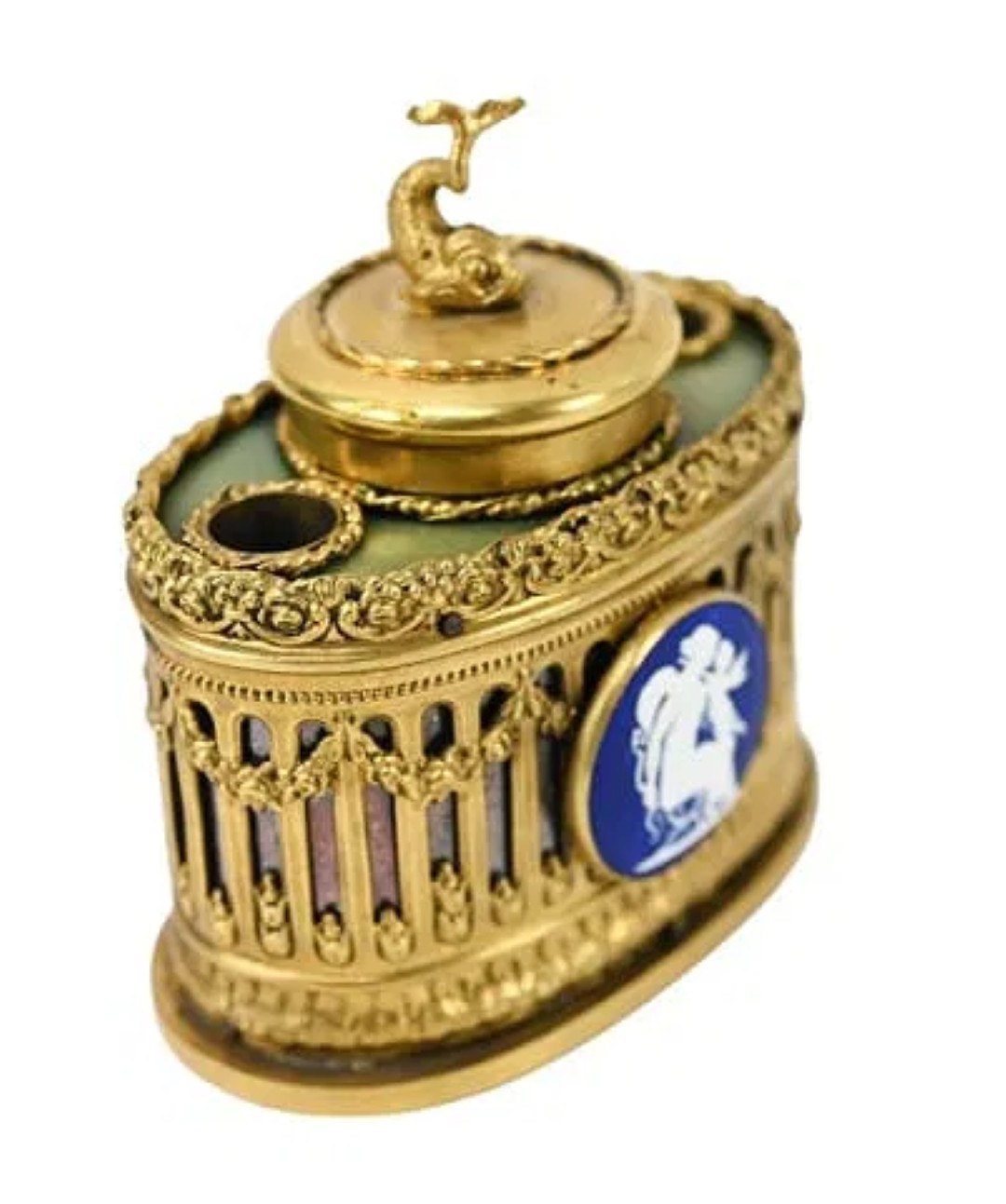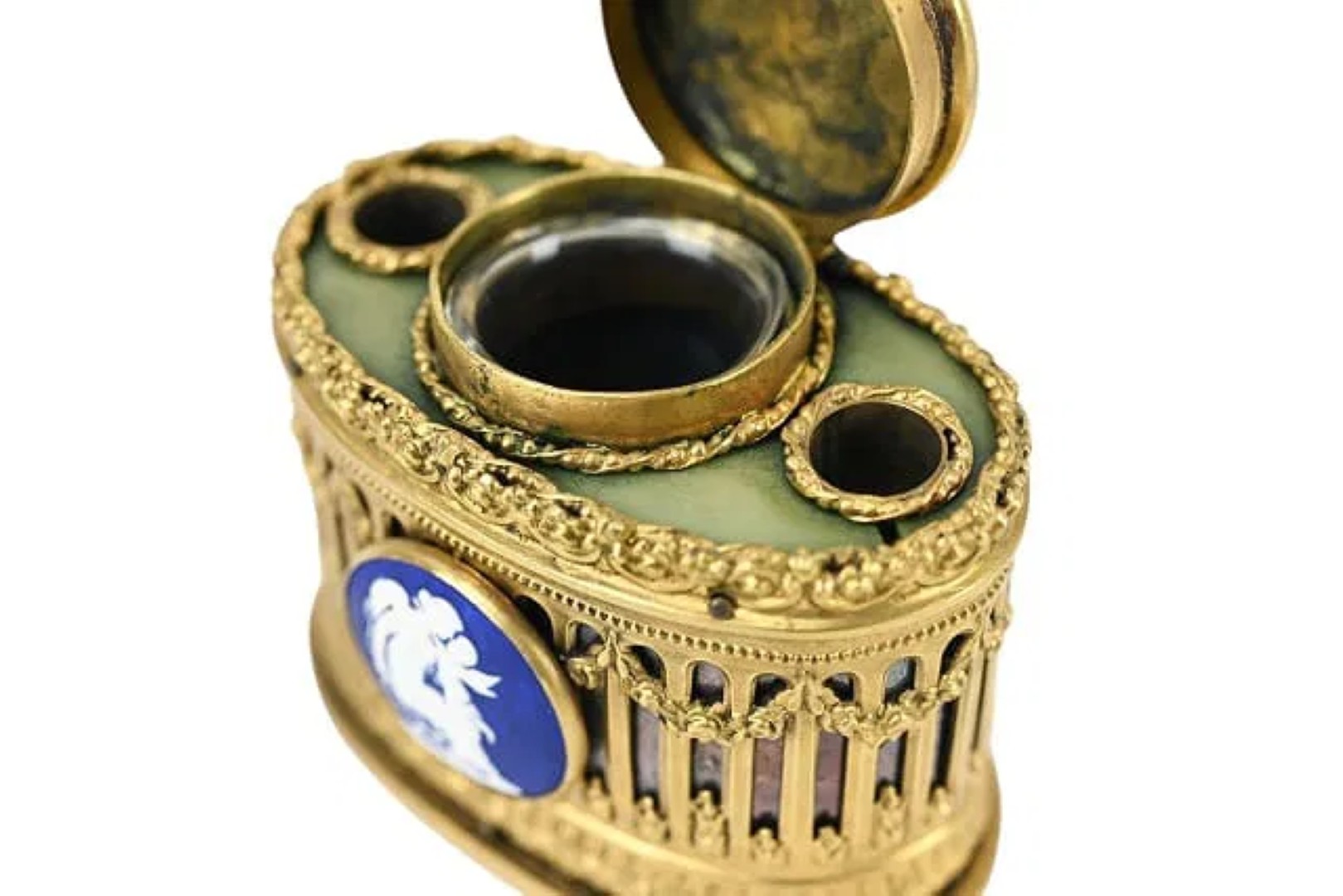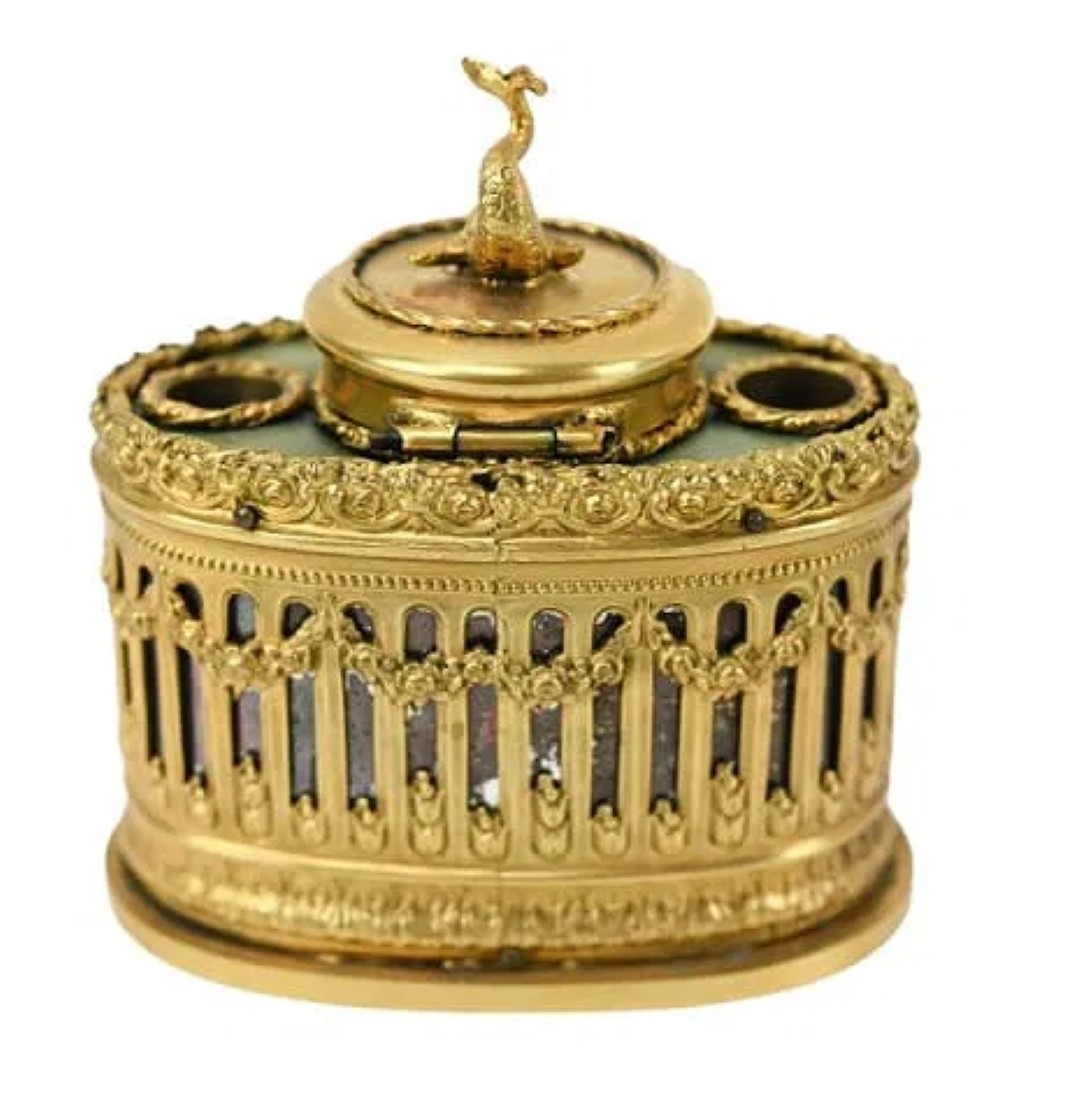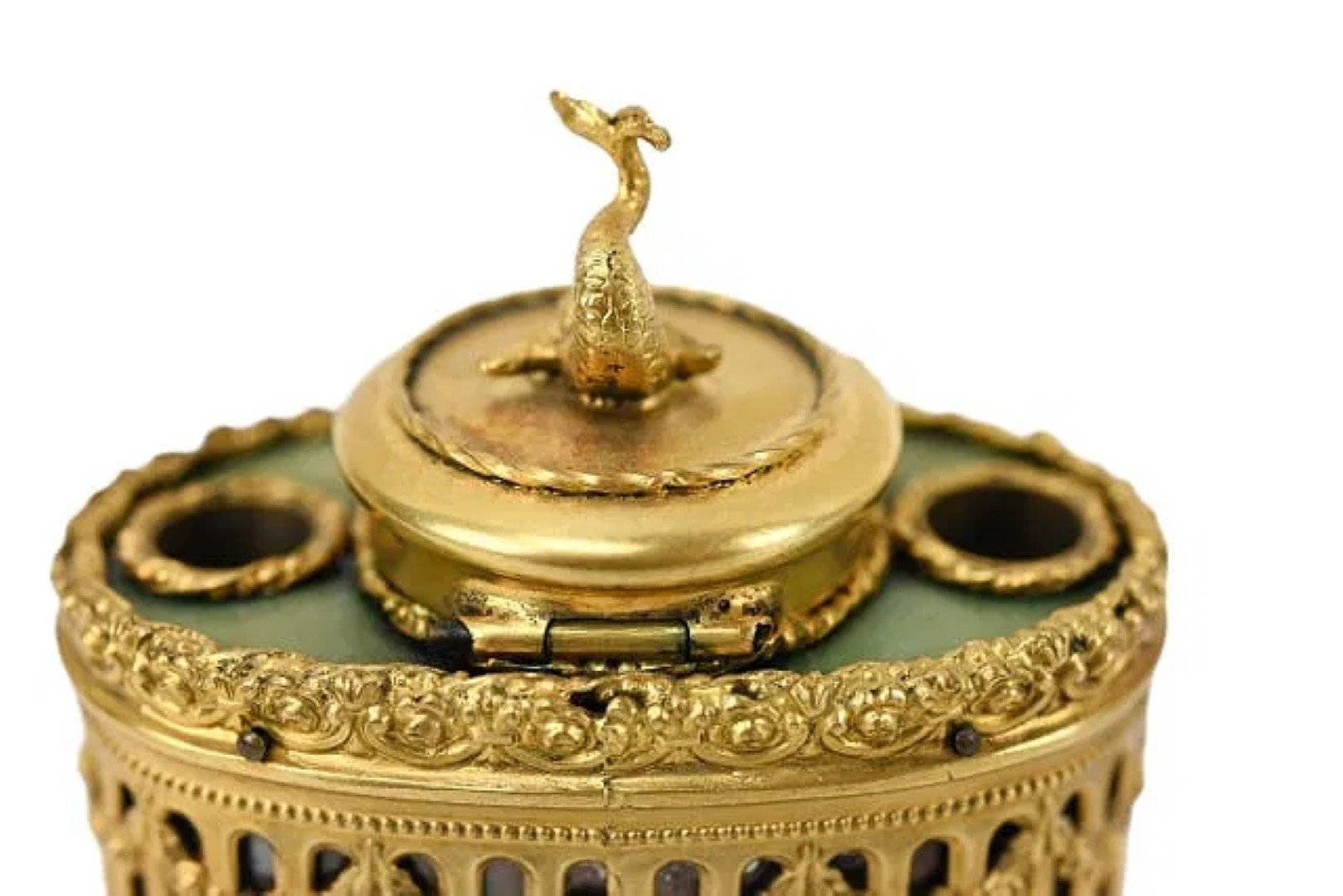
Ormolu Inkstand with Venus and Cupid
| Categories | Figural - Mythology; Literature; Religion; Fictional |
| Type | Cupid / Cherub / Angel |
| Material | Jasperware, Ormolu |
| Markings | Unmarked |
| Manufacturer | Undetermined |
| Origin | France |
| Date or Era | circa 1800 |
| Measuring | 3” x 1 ½” x 2 ¾” high |
This is an elaborate, Neoclassical-style inkstand crafted from ormolu, which is finely gilded bronze. The piece has an oval shape and is comprised of a central inkwell compartment flanked by two quill holders. The exterior is decorated with a repeating pattern of vertical bars and delicate swag garlands, a common motif in Neoclassical design. The top of the inkwell is covered with a hinged lid adorned with a dolphin finial. The two side rings, intended to hold quill pens, are also decorated with finely detailed ormolu scrolls and floral patterns.
The Jasperware Plaque
Jasperware is an unglazed stoneware developed by the English potter Josiah Wedgwood in the 1770s. It is famous for its smooth, matte finish and its two-color designs, typically white figures on a colored ground, with blue being the most iconic color. The scenes almost always depict mythological figures, portraits, or classical motifs inspired by ancient Greek and Roman art. The plaques on this inkstand, depicting what Venus and Cupid, are a perfect example of this. The motif of a seated Venus with her winged son, Cupid, was a very popular theme in Neoclassical art, symbolizing love, beauty, and mythology.
Origin and Date
The combination of ormolu and a Jasperware-style plaque points strongly to a French origin. While Wedgwood invented Jasperware in England, its popularity led many European factories, particularly in France, to produce their own versions. French artisans were masters of ormolu work, creating these types of highly ornate, gilt-bronze objects during the Neoclassical period.
The style of this piece—with its classical columns, garlands, and mythological motifs—is characteristic of the Neoclassical and French Empire periods, which were prevalent from the late 18th century into the early 19th century. The dolphin finial, a symbol often associated with maritime power and the sea, was a favored motif in French decorative arts during the Napoleonic era. Therefore, this inkstand was most likely made in France during the late 18th or early 19th century.
Sold for $150 in August 2025
Content disclaimer. The information posted is the owner’s best knowledge and may not have been vetted by the SOIC. We welcome comments, corrections, and additions, working to make our website information comprehensive and accurate.
Join the Society of Inkwell Collectors (SOIC) – it’s free!
Founded in 1981 as a non-profit organization,
we are documenting inkwells (and accessories).
We’re here to help and inform!












